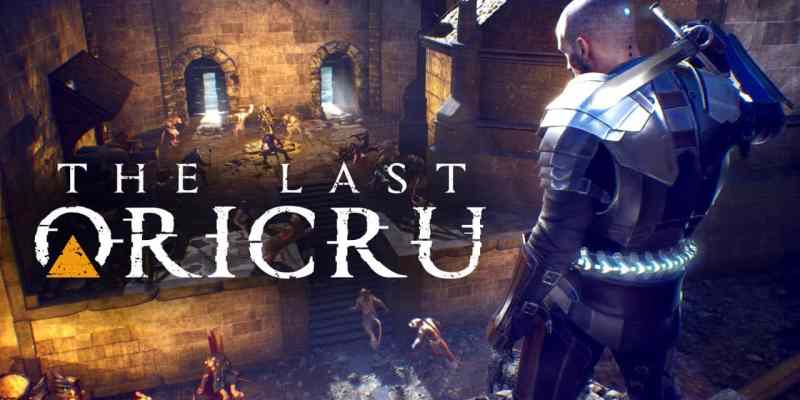Head over to the GoldKnights website and you’ll find its motto: “Better fantastic and few than mediocre and many.” It’s a statement that highlights the relatively small team’s ambitious goals, and it’s a saying that has propelled them through the development of their upcoming story-driven action RPG, The Last Oricru. This new IP is set in an original fantasy, sci-fi universe that puts quality over quantity, but it’s also laying the groundwork for GoldKnights to continue making games for die-hard RPG fans. After spending some time with The Last Oricru at PAX East 2022, we had the opportunity to interview GoldKnights executive producer Vladimír Geršl to talk about classic RPGs, influences, story-driven game development, Gamescom, and more.
The Escapist: Why is this team the perfect group to make a game like The Last Oricru?
Vladimír Geršl: Being realistic with our studio in the beginning, I knew that we cannot compare ourselves to a studio like FromSoftware, you know? So, that was the goal from the beginning: use elements as a good base for the game but build IP on it. We focused on a few elements that are not typical for this sub-genre and that are closer to classic action RPGs.
We added dynamic storytelling, or dynamic game structure, as one of the big features. We’re not just using a buzzword. The butterfly effect element plays a large part in the story. Another pillar we decided to focus on was online co-op. On top of that is the living world, which is a combination of a sci-fi world and a medieval world.
So, based on those three pillars, we built our own RPG, but it’s not, like, 50-80 hours of gameplay. It’s smaller, but every game really is different if you make different choices and different actions in the game. You’ll play it multiple times and, I believe, still have fun.
I find that really exciting already. There are some big action RPGs that I’d love to replay, but they are so massive that I can’t be bothered to go back.
Vladimír Geršl: I’m the same way. I think that’s the case for many players, especially with a co-op experience. It’s hard to say to someone, “Hey, come to my home. Come here for two weeks to play this game.” But if you say, “Hey, come here for a weekend and we can play through this game,” that’s fine.
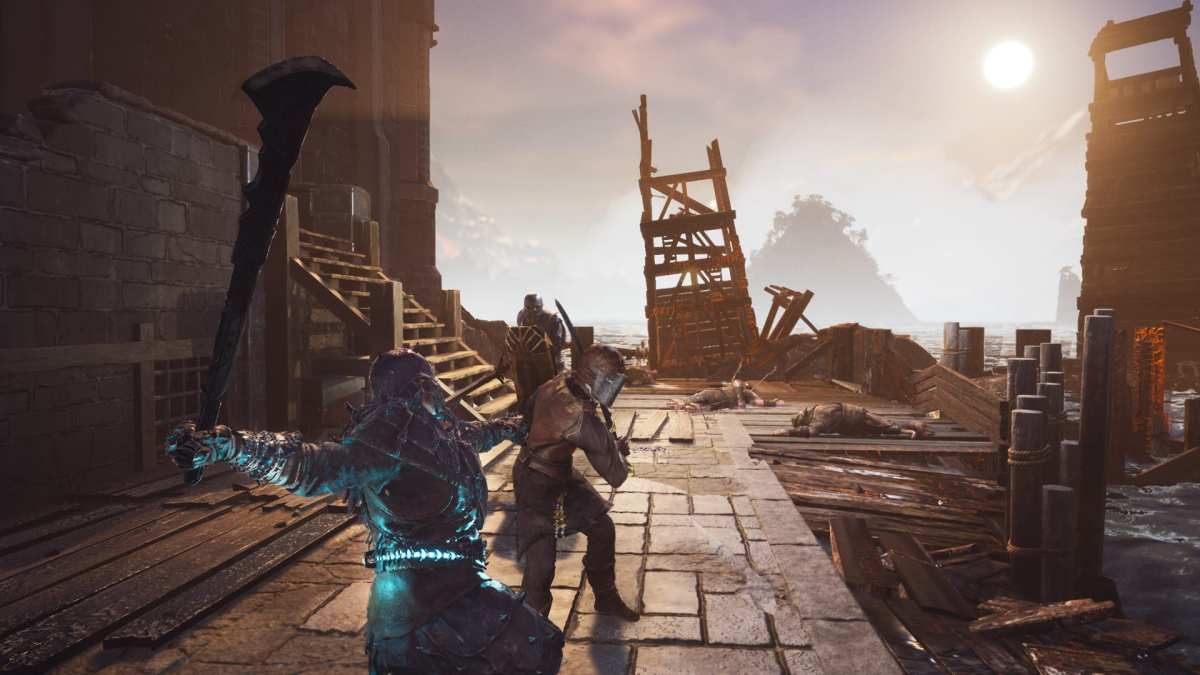
You mentioned that The Last Oricru will implement some elements from classic RPGs. Can you elaborate on which games from that genre influenced this game’s development?
Vladimír Geršl: It’s a lot of games, really, but if I start with the oldest ones… My colleague, Pavel, is a huge fan of Wizardry. For me, Might and Magic — not Heroes of Might and Magic — but Might and Magic VI is still one of the best games. So, those old RPGs were some inspiration for us, then some new things that we really like, for example, Piranha Bytes or Spiders. GreedFall is a good example, where I don’t like some elements, like the fighting mechanics, but the feel of the game, the dialogue, the flow — it’s really good from my point of view.
Then, obviously, from later RPGs, we took some inspiration from The Witcher and then FromSoftware games in general. We like some of them more than others, like, for example, the first Dark Souls. We took some inspiration from the great points, but also from the things that we don’t want to do the same way.
I’ve produced many games, and I’ve noticed that you shouldn’t look only at your genre because some things are better in other genres. For example, for branching stories, we took a look at The Walking Dead games from Telltale. But as I said, we’re trying to set up our own IP, and if everything goes well, and I believe it will, it’s not the only title with “The Last Oricru” name.
Now, you’ve talked about inspirations, but what are you doing to set The Last Oricru apart from others in the same genre?
Vladimír Geršl: It’s a fresh cocktail of things you cannot find in this genre but you still feel can be interesting for your target audience. Me, as a producer, I always look at a game from the target audience’s side. Targeting Soulslike players was a huge challenge. To make the game difficult enough, to be skill-based, to have precise controls and reactions, and so on. On the other hand, to target classic RPG players that are maybe bored from all the super-hard games, who want to follow an interesting story, different storylines, and so on. That premise to hit both audiences and have different difficulty settings, was, by itself, a huge challenge.
You can see The Last Oricru. You can see it’s not just another Soulslike game. It’s trying to build its own unique aesthetic. If you play the story itself, I believe you will very quickly figure out it’s different. It is really about decisions, about actions.
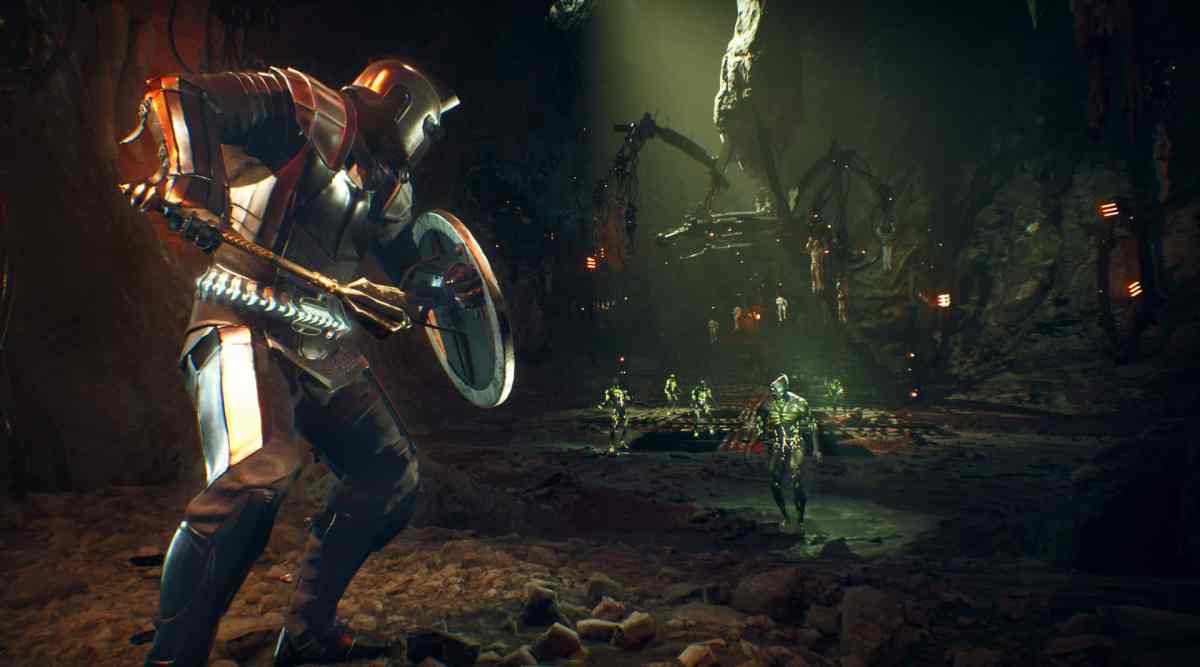
What can you tell us about weapon options? Are there different weapons you can get, and what is the variety there?
Vladimír Geršl: We try to keep to the principle of less is more — but also different, let’s say. We don’t have hundreds of weapons. Each class feels really different and has different animations and timings. You need to play a class a lot to really master it. Our goal was to not have 50 weapons in each class, but just a few and try to differentiate those classes as much as possible.
On top of that, we have magic. Basically, each weapon can have its primary and secondary attack, but some weapons, instead of a secondary attack, have some special magic attack. So, this combination of weapons plus spells is quite interesting and gives you lots of options.
You have swords or axes, then you have spears, dual-hand swords, maces… We tried to take a fresh approach, but not too different. For magic, we have three different types of magic. Each type is connected with one race in the world. It’s basically a rock, paper, scissors principle, where, if you play with one race against another race, you will need to invest in things differently than another race.
I’m really excited about this less-is-more, quality-over-quantity approach, and I think a lot of other people will be too. That Diablo-like design can sometimes feel mindless when you’re constantly rotating out hundreds of weapons.
Vladimír Geršl: Exactly. Our feeling is that it is always better to use some game designer’s mind than some generator of maps or random weapons. Every single weapon is hand-tweaked. Every level is handmade. We have maps connected together, and every single small part of the level or section is quite big, but all of those levels are really, carefully handmade. So, you won’t feel like you’re playing with Google Maps.
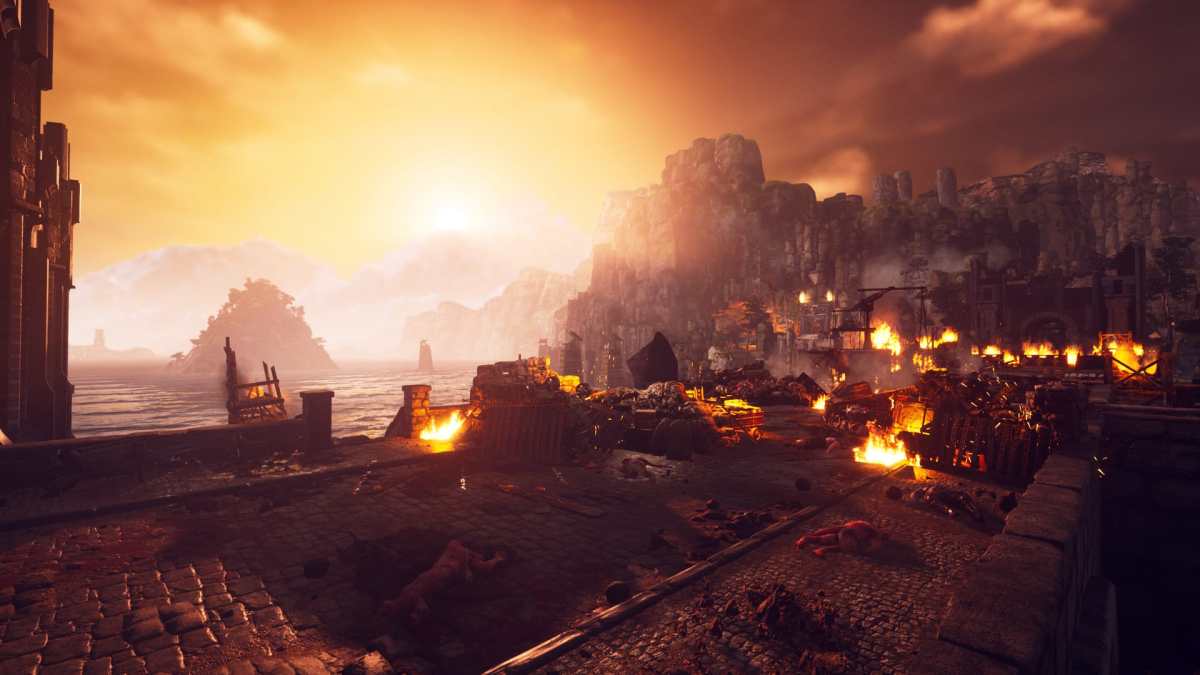
What are some of the most interesting ways, or your favorite ways, players can impact the story, the world around them, and their relationship with the different factions?
Vladimír Geršl: We came up with different ways players can affect the world. In the first level, for example, you are asked to hide a weapon, and we built it in a way that will see most players fail. They will figure out the game doesn’t have a “game over” at that moment. It doesn’t have a “mission failed” or something. It just leads you through the game differently. Even for us, it was an interesting moment, and we started to add more and more of those moments into the game.
We really try to not write in a black-and-white sense. You’ll figure out that every character has his or her agenda, and you’ll want to deal with that. In my 20-plus-year career, I have never done anything as complicated as this. It is, for me, the first time in my life that I don’t have the whole game in my head because you can make so many decisions. Some testers always surprise me with some special way they play through the game.
What would you say is the ideal way to experience The Last Oricru: single-player or co-op?
Vladimír Geršl: I think the best way might be single-player first, and then play as the second player with someone else in co-op. Because of those story decisions and actions, only the first player can affect the branching story. For me, personally, the most fun is still when you sit together on one sofa and play together.
The Last Oricru uses a hop-on, hop-off system. We spent quite a lot of time making it as seamless as possible, in a way that you can play with someone, then play alone, and then play with someone again. It’s not the same system as in Soulslike games, where you have a partner only for a boss. If you want, you can play the whole game together.
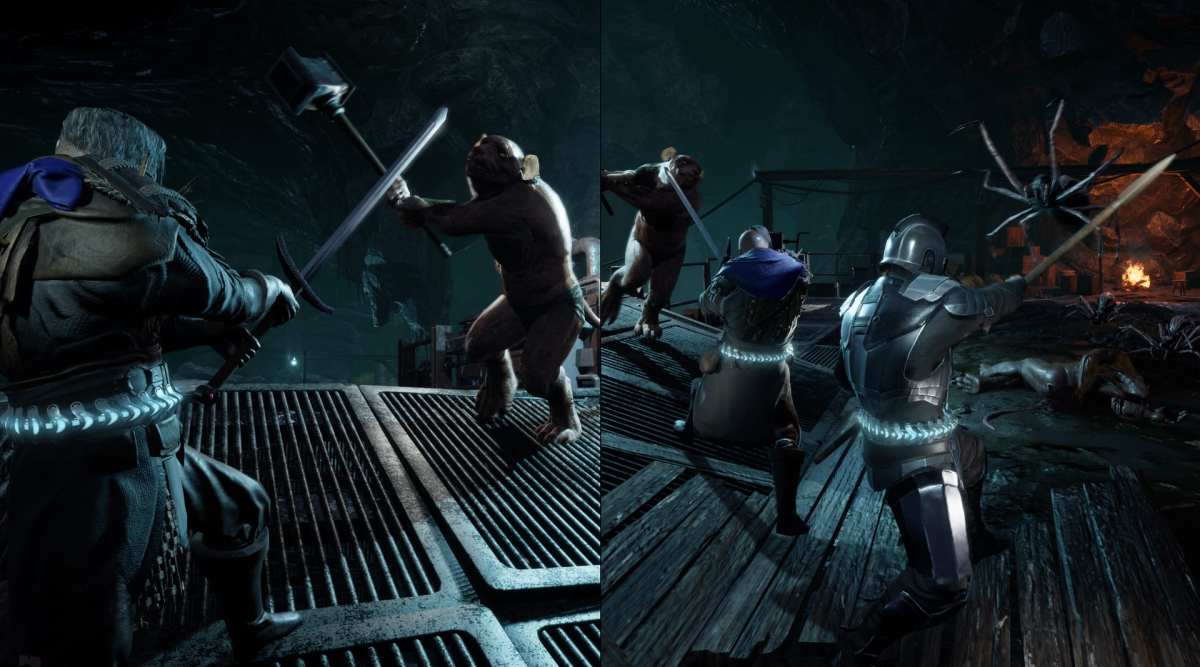
I understand why some Soulslike games use that method for co-op, but I do wish there was a bit more freedom.
Vladimír Geršl: I also understand it from a designer’s point of view, and it is a challenge. Many players don’t understand a lot of the hidden, technical challenges. In single-player you can, let’s say, only use memory to show parts of levels, but with two players, you need to have double. You can be in different parts of maps, so you can have double the memory used by those levels, etc. It has a lot of technical impact. For us, the most challenging and fun thing to design was the extra gameplay in co-op. We added a lot of features to make it more fun to cooperate.
Are there difficulty options to choose from?
Vladimír Geršl: Yes, yes. Originally, we were not planning to do that. We were planning to have one option and give you a chance to overcome some situations. We figured out that it was still too hard for some classic RPG players because you cannot just overcome every boss fight by making certain story decisions. So, after focus tests and playtests — and we were doing many of them — we decided to add options. We heard a lot of players saying, “We really like this story. We really like this main character. We want to follow it, but we cannot. It’s too hard.”
Instead of doing something in the middle to make the game less hard and then not hit any of those audiences — because it would be too easy for Soulslike fans and too hard for classic RPG fans — we decided to add two options. Those options are working quite well. It’s more accessible, let’s say.
Gamescom is right around the corner. Is there anything you can share about what GoldKnights has in store for the show?
Vladimír Geršl: I can’t be too specific, but as we said in our earlier trailers, The Last Oricru will be released in 2022. Obviously, it will release at a certain point. I can’t say when that point is, but Gamescom is the logical culmination of all of everything. So, at Gamescom, we’re planning to be really big. We are preparing, right now, a new demo that is going to show new areas and new things. Gamescom is going to be quite interesting and quite important in our timeline. We will have a big surprise there. Come to our booth, and you’ll see.
Is there anything else you’d like to add before you go?
Vladimír Geršl: We are building this game in a way that we believe smaller teams should build an RPG nowadays. We are building it for players. We would be super happy if players could play our demo, which is now available on Steam. For us, it’s super important for us to listen to all feedback. So, if there is any chance to have more players on Steam, more players commenting now — even if it’s not positive — it would be great. It’s essential for us to make the experience as good as possible from day one.
The Last Oricru will launch for PC, PlayStation 5, and Xbox Series X | S later this year.
This interview about The Last Oricru has been edited for clarity.
